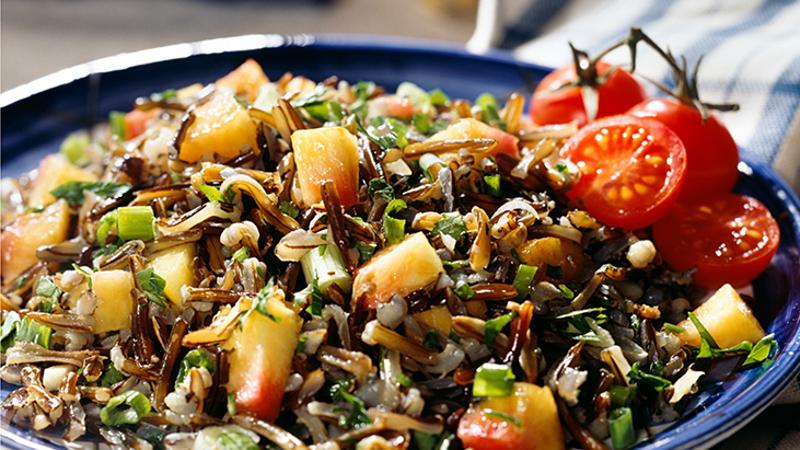
For several years, trend forecasters have been predicting that Native American would emerge as the next hot cuisine. But it’s taken a while for the supply chain and dining public to get the message. Now the forces seem to be aligned to push American Indian dishes into the mainstream.
Some noncommercial operators have already found success with Native American menus. At Minneapolis Public Schools, an annual Native American Family Involvement Day spurred District Executive Chef Mark Augustine to develop recipes for school lunch using indigenous ingredients from the Upper Midwest. His manoomin salad, now a student favorite, combines wild rice, dried cranberries and roasted squash, tossed with a dressing made of blueberries and honey.
At Washington University in St. Louis, Campus Executive Chef Patrick McElroy worked with chef Nephi Craig, founder of the Native American Culinary Association, to develop authentic items using indigenous ingredients, but some adaptations were necessary.

His Three Sisters Salad, for example, incorporates the three crops Native Americans referred to as the “three sisters”—corn, beans and squash—but they wouldn’t have been eaten as a salad. McElroy menus a traditional Hopi vegetable stew but adds soy-based protein and serves it in a bread bowl similar in taste to Hopi bread, but in a different shape, he says.
Except for a couple of independents and casino eateries, American Indian cuisine hasn’t gotten much attention on the restaurant side. But in November, Francis Ford Coppola opened the high-profile Werowocomoco, an American Native-themed restaurant, in his Geyserville, Calif., winery. And last September, Sean Sherman, who owns a catering company called The Sioux Chef, launched a Kickstarter campaign to fund a Native American restaurant he plans to open in Minneapolis. The concept generated pledges of over $148,000 and became the most-backed restaurant in Kickstarter history. Unlike Werowocomoco, which menus items like salmon sashimi tacos, Sherman’s eatery—called The Sioux Chef: An Indigenous Kitchen—will focus on precolonial foods—only those ingredients available to Native Americans before British colonization.
Why all this interest now? Ben Jacobs, chef-owner of two-unit Tocabe, an American Indian fast casual based in Denver, attributes the surge in interest to several forces. “Native Americans are the oldest inhabitants on the continent, but it’s the newest cuisine,” he says. “It took time to educate people. And now younger customers are more adventurous and aren’t as hesitant about exploring these ingredients, many of which are familiar.”

Sourcing indigenous foods also was a challenge when Jacobs opened the first Tocabe seven years ago. As the Denver-based concept expanded to two locations and a food truck, the producer network and volume of products available expanded too. Jacobs partners with tribal producers, farmers and growers and supports Native American vendors to source ingredients such as wild rice (to the tune of 150 pounds a month), tepary beans, corn, wheat berries, bison and chicken. Tocabe never tried to be 100% precolonial, says Jacobs, but he places great importance on “reclaiming” indigenous ingredients and tying the menu into Native American culture and communities.
That’s why one of Tocabe’s most popular items is the Indian taco—a dish based on Jacobs’ grandmother’s fry bread recipe (his family is Osage). Customers can top it with a choice of bison, grilled chicken or vegan beans, plus extras such as hominy, corn, tomatoes, cheese and a pumpkin seed mix ($7.50-$10.25). Posu bowls go for 85 cents more and feature a base of red quinoa (from South American Indians), wheat berries or wild rice. Tomatoes, cheese and sour cream are among the toppings that are not pr-colonial but are “expected” on tacos and bowls in fast casuals.
Recruiting and nurturing staff was another hurdle to Tocabe’s growth and the emergence of Native American cuisine into the mainstream, says Jacobs. Now that he’s built a pool of talent, vendors and customers, Jacobs is ready to expand. Plans for a third Tocabe location are in the works. “As they grow, I grow,” he says.
Members help make our journalism possible. Become a Restaurant Business member today and unlock exclusive benefits, including unlimited access to all of our content. Sign up here.